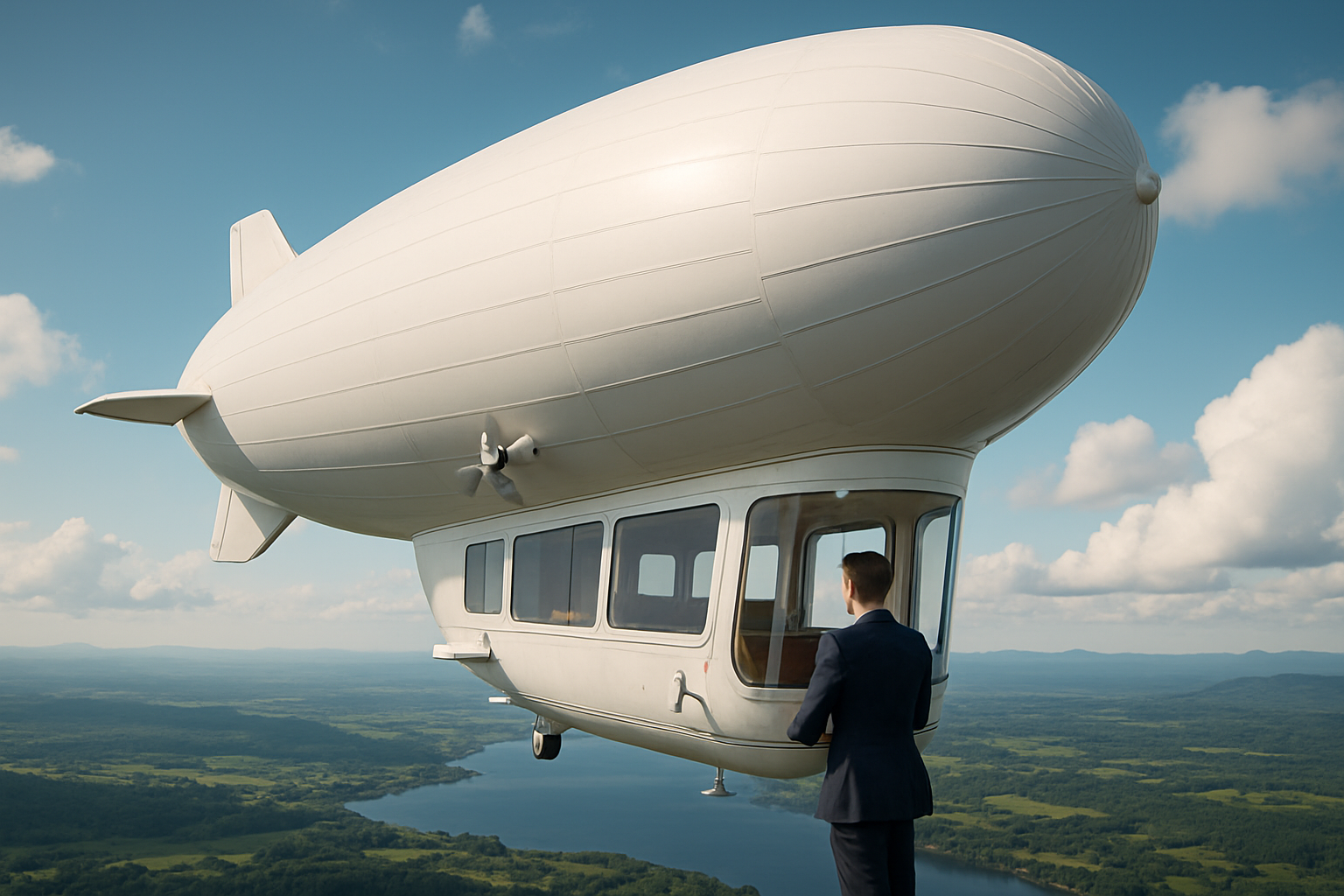Zeppelin Resurgence: Rediscovering Luxury Air Travel
The skies are witnessing a renaissance of an iconic airship, as zeppelins make a triumphant return to the world of luxury travel. These gentle giants of the air, once relegated to history books, are now poised to revolutionize the way we experience long-distance journeys. With cutting-edge technology and a focus on eco-friendly design, modern zeppelins offer a unique blend of nostalgia and innovation, promising to redefine the concept of slow, luxurious air travel for the 21st century.

However, the era of zeppelin travel came to an abrupt end with the Hindenburg disaster in 1937. The tragic accident, coupled with the rising popularity of faster airplanes, led to the decline of airship travel. For decades, zeppelins were consigned to the realm of historical curiosity, their potential for passenger transport largely forgotten.
The Modern Zeppelin Revival
Fast forward to the 21st century, and zeppelins are experiencing an unexpected resurgence. Advancements in materials science, propulsion systems, and safety measures have breathed new life into this once-dormant mode of travel. Companies like Hybrid Air Vehicles and Zeppelin Luftschifftechnik are leading the charge, developing modern airships that combine the graceful aesthetics of their predecessors with cutting-edge technology.
These new zeppelins are designed with a focus on sustainability, utilizing hybrid-electric propulsion systems and lightweight, durable materials. They offer a significantly reduced carbon footprint compared to traditional aircraft, making them an attractive option for environmentally conscious travelers.
The Luxury Experience Reimagined
Modern zeppelin travel is reimagining the concept of luxury in the sky. Unlike the cramped confines of commercial aircraft, zeppelins offer spacious interiors with panoramic views. Passengers can enjoy comfortable lounges, private cabins, and gourmet dining experiences while floating serenely above the landscape.
The slower pace of zeppelin travel is being marketed as a feature rather than a drawback. In an era of constant connectivity and rushed itineraries, the idea of a leisurely journey where the voyage itself is as important as the destination is gaining traction among luxury travelers. Zeppelin cruises offer the opportunity to truly appreciate the landscapes below, with large viewing windows and even outdoor observation decks.
Unique Travel Opportunities
The revival of zeppelin travel is opening up new possibilities for tourism and exploration. These airships can access remote areas that lack conventional airport infrastructure, making them ideal for eco-tourism and expedition-style travel. Imagine gliding over the Amazon rainforest, observing wildlife from a silent floating platform, or embarking on a polar expedition with minimal environmental impact.
Zeppelins are also being considered for luxury city-to-city travel, offering a refined alternative to both air and rail options. Routes like London to Paris or New York to Boston could be transformed into scenic, stress-free journeys, allowing passengers to bypass crowded airports and enjoy the ride.
Challenges and Future Prospects
Despite the enthusiasm surrounding the zeppelin revival, challenges remain. The memories of past accidents still linger in the public consciousness, requiring extensive education and reassurance about modern safety measures. Additionally, the infrastructure for zeppelin travel is still in its infancy, with few dedicated docking facilities currently available.
However, proponents of zeppelin travel are optimistic about its future. As travelers increasingly seek out unique and sustainable travel experiences, the appeal of these gentle giants of the sky is likely to grow. With continued investment and technological advancements, zeppelins could once again become a viable and coveted option for those looking to travel in style and comfort.
Floating Facts: Zeppelin Trivia
-
Modern zeppelins use helium, a non-flammable gas, ensuring a high level of safety
-
Zeppelins can stay airborne for days, even weeks, without refueling
-
The largest modern zeppelin designs can accommodate up to 100 passengers
-
Zeppelins produce about 80% less carbon dioxide per passenger compared to commercial aircraft
-
Some zeppelin designs incorporate solar panels to supplement their power systems
As we look to the future of travel, the resurgence of zeppelins represents a fascinating blend of nostalgia and innovation. These majestic airships offer a unique solution to the growing demand for sustainable, experiential travel. While they may not replace conventional air travel for all purposes, zeppelins are carving out a niche in the luxury travel market, promising unforgettable journeys that harken back to a more elegant era of exploration while embracing the technological advancements of our time.





